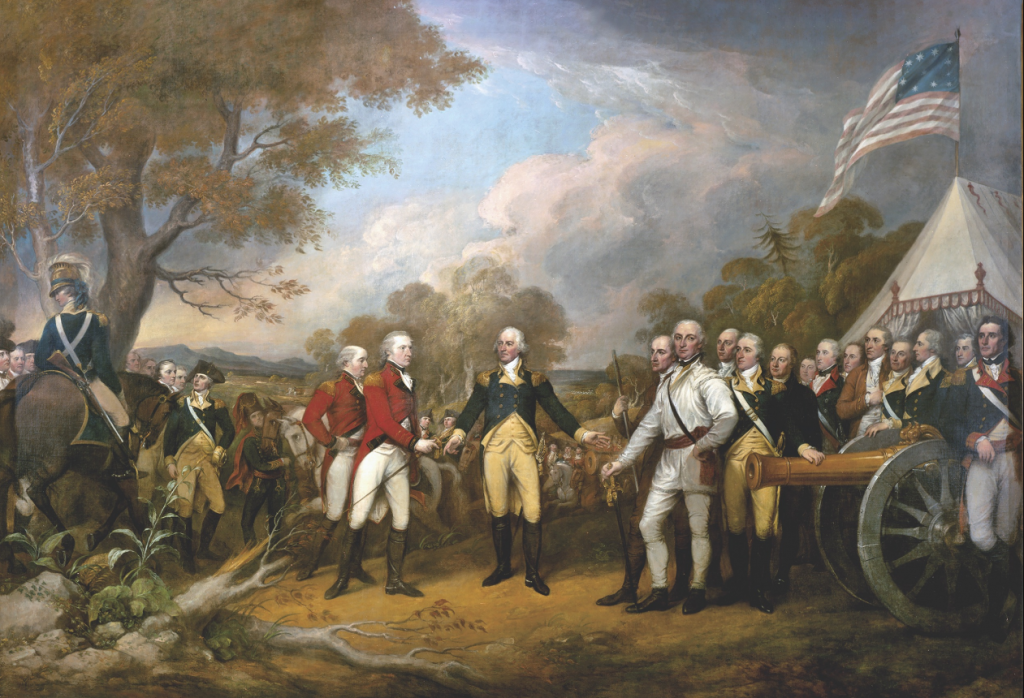In March 1777, in a cozy London tavern, British General John Burgoyne raised his glass in celebration. He had just received approval for his “perfect plan” to crush the American rebellion. Confidently, he declared, “Mark my words, gentlemen, within a year, this war will be over!” One of his friends, however, wasn’t so sure. “I predict,” he said coolly, “you’ll be back here as a paroled prisoner.” A ten-pound bet was made.

Burgoyne’s grand strategy was simple but bold: march south from Canada with his army, link up with British forces moving north from New York City, and seize control of the Hudson River Valley. This would effectively isolate New England, the heart of the revolution. But there was a fatal flaw—Burgoyne assumed that General William Howe, the commander in New York, would march north to support him. What he didn’t know was that Lord George Germain, the British Colonial Secretary, had failed to properly coordinate the plan. While Burgoyne moved south, Howe had his eyes on Philadelphia, leaving Burgoyne to fend for himself.
The March South and the Fall of Fort Ticonderoga
With 7,000 British and Hessian troops, Burgoyne set off in June 1777, advancing through the dense forests of upstate New York. His first major target was Fort Ticonderoga, a key American stronghold. Though heavily fortified, the fort had a weakness—an unguarded hill called Sugar Loaf. Burgoyne’s engineers built makeshift roads and hauled artillery to the summit. On July 5th, as the sun rose, American troops at the fort were stunned to see British cannons aimed directly at them. Realizing they were doomed, the American commander, Arthur St. Clair, made a tough decision—he abandoned the fort that night to save his army.
The fall of Fort Ticonderoga was a public relations disaster for the Americans. Congress was outraged, and George Washington himself was shocked at how quickly it had been lost. Yet, in hindsight, St. Clair’s retreat preserved valuable troops for the battles to come.
Burgoyne’s Troubles Begin
Flushed with success, Burgoyne pressed on toward Albany. But cracks in his plan quickly began to show. The American militia, enraged by British-allied Native American raids, rallied in force. As Burgoyne’s army hacked through the wilderness, American troops felled trees, destroyed bridges, and launched relentless guerrilla attacks, slowing his progress to a crawl.
Then came the decisive blunder. Running low on supplies, Burgoyne sent a force to raid an American supply depot at Bennington. What he didn’t expect was the fierce resistance he encountered. The American militia, led by General John Stark, annihilated Burgoyne’s raiding party, leaving him even weaker and demoralized.
Meanwhile, General Horatio Gates had taken command of the American forces at Saratoga, bolstered by thousands of enraged local militia. Among his officers were two of Washington’s best men: Daniel Morgan, leader of a deadly sharpshooter corps, and the daring Benedict Arnold. As Burgoyne’s army struggled forward, he found himself increasingly outnumbered and outgunned.
The Turning Point: The Battle of Saratoga
On September 19th, Burgoyne’s army clashed with American forces at Freeman’s Farm. Morgan’s riflemen wreaked havoc on the British ranks, but the battle ended inconclusively. Three weeks later, on October 7th, the second battle at Bemis Heights sealed Burgoyne’s fate. Arnold, defying Gates’ cautious orders, led a furious counterattack, shattering the British lines. Wounded but victorious, Arnold’s reckless bravery turned the tide of battle.
Hemmed in by swarming American forces, Burgoyne had no choice but to surrender on October 17th. Nearly 6,000 British and Hessian troops laid down their arms—the first time an entire British army had capitulated in the war.
The Impact and Legacy
Burgoyne’s defeat at Saratoga was the turning point of the American Revolution. It convinced France to formally ally with the Americans, bringing much-needed military and financial support. The war that Burgoyne had hoped to end in a year would drag on for another six, ultimately culminating in American independence.
As for that ten-pound bet? When Burgoyne returned to London, disgraced and out of favor, his old friend was waiting. One can only imagine the smirk on his face as he collected his winnings.
History is full of “perfect plans” that go awry, but few miscalculations have had such world-changing consequences as Burgoyne’s ill-fated march to Saratoga.

No comments yet.